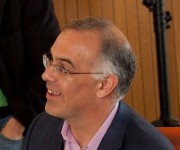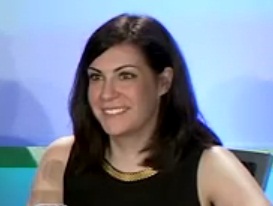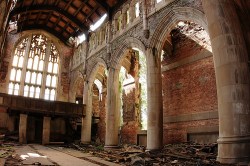
slworking2Gary’s abandoned Methodist church was featured in Transformers: Dark of the Moon.
To say, that Gary, Ind., has seen better days is a laughable understatement. In an elegy for the city, James Howard Kunstler compared it to post-evacuation Chernobyl. Horror and action filmmakers have taken advantage of Gary’s abandoned cityscape, but the town lacks a single movie theater to show the films, which include Transformers and the Nightmare on Elm Street remake. The History Channel even featured Gary in Life After People, a series in which scientists and engineers imagine the built world sans human life. Violent crime has decreased in Gary since it was dubbed the Murder Capital of the U.S., but it still hovers above the national average.
How did this happen? Founded in 1906 by the United States Steel Corporation, Gary experienced a huge population crash when the steel industry shuttered, shrank, and moved overseas. In 2010, the town’s population was at 40 percent of its ’50s height of 200,000.
Last November, the city elected Indiana’s first African American female mayor, Karen Freeman-Wilson. On Jan. 2, the mayor sat down in a city hall that has a vacant hotel as a next-door neighbor and set about trying to deal with the city’s decades-long problems and budget shortfalls.
“It’s the sense that you might be able to do something about a community that you love and support,” a political science professor told Atlantic Cities. “With a city like Gary or Detroit, yes, things are so bad, you’re likely to succeed. The bar is set very low.”
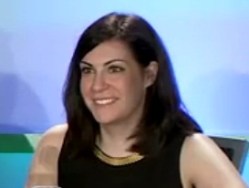
Lauren Riga.
Freeman-Wilson set the bar high with her pick to run the newly configured sustainability department, however. At 28, Lauren Riga has been a delegate for United Nations conferences, including the 2010 climate meeting in Cancun. In her free time, she runs a radio program on sustainability and teaches sustainability courses for the MBA program at Valparaiso University.
Gary has been called the ghost of America’s future — as budgets dry up and jobs ship overseas, there are fears that more and more of our towns will look like the ruined backdrop of Life After People. Riga hopes that instead of Gary being a harbinger of post-industrial doom, it can show the rest of the country how to reimagine an industrial city green.
The latest episode of Knope and Change, our series about women who are leading the green cities revolution, features an edited conversation with Riga about the future of Gary.
Q. In a recent interview, your mayor said the problems facing Gary are “almost exhausting to describe.” Doesn’t the city have bigger issues than sustainability to think about?
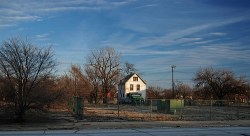
Samuel A. LoveI’ve seen better days. I’ve been the star of many plays.
A. The mayor has launched many initiatives such as the gun buyback program; 168 guns were turned in for the city’s first buyback event and another one is scheduled for Oct. 27. We’re a member of Michelle Obama’s Let’s Move campaign to fight childhood obesity.
They are all interrelated. Our green development and infrastructure efforts provide job opportunities and get the citizens engaged so that they can really champion their city again. It is really bringing down the crime rates and getting people off of the streets — burglaries have dipped by 30 percent this year.
We have after-school programs, including environmental education, year-round now. There are so many community block groups that have been conducting community cleanups. Our department provides the cleanup kits and we help advertise and provide support to the volunteer groups.
On the weekends in the city, there are lots of activities going on. Our two-day Clean Water Celebration had more than 600 attendees. We had over 350 participants at the Household Hazardous Waste Collection & Green Awareness Day event. Citizens enjoy learning about the environment and how to go green. But they especially feel like they are making a difference and taking care of their backyards and their homes.
Q. You were appointed at the beginning of the year, when the new mayor took office. What have you been up to?
A. When we started in January, we faced, and still face, tremendous legacy issues. We have a lot of brownfield sites and abandoned buildings. We are trying to lay a solid foundation for addressing these issues. From an air, land, water perspective, we need to clean up the city. We’re trying to identify all of our land inventory and target our urban renewal strategy towards those.
We’ve been ramping up our recycling program and our urban agriculture and food movement is launching. [We have] six flagship urban community gardens and rising. The City of Gary is collaborating with the U.S. EPA and HUD to explore opportunities for utilizing green infrastructure at abandoned, derelict properties formerly occupied by large buildings, strip malls, stores, and parking lots.
Q. Gary’s population is 85 percent African American. Whenever a city or neighborhood gets greener or new infrastructure, it faces the risk of gentrification. Does your community have those fears? And how do you make sure it doesn’t happen?
A. We are definitely taking a community-based approach. We had a brownfields and a green job training program where we trained Gary residents. It’s a 14-week program and they come out with a certification at the end. For a lot of our lake and natural areas restoration work, we trained and hired local Gary workers. We are pushing hard to provide job training for emerging markets and emerging green jobs so we can hire and provide those jobs. That’s a huge priority for the city.
Q. You’ve said that ever since you were a small child, you’ve wanted to work on public policy and environmental issues. Why are you so passionate about such boring things?
A. I realized early on that I wasn’t going to be a scientist. [laughs] I’m a policy nerd and I’ve always had a compelling interest in trying to make a difference in the world. One way to do that is by affecting government decisions.
Q. Why did you choose Gary?
A. I grew up in the next town over. Gary and the Great Lakes are home to me. I’ve been working on Great Lakes issues for a number of years now.
Mayor Freeman-Wilson is a visionary. She understands that a healthy environment is a healthy society. Really these are social issues. Transitioning to the green economy is a social and economic and environmental matter.
Q. Where do you see Gary in 20 years?
A. This is an opportunity for us to start from scratch. We have a new administration. There’s a tremendous amount of interest and partnerships with federal agencies and nonprofits. The renewed interest and excitement in the city really gives us an opportunity to jumpstart the city on a green track.
I see us being an innovative, forward-thinking, green urbanism city. We are working with other Great Lakes cities that are facing similar issues, but hopefully we can set the tone and be at the forefront of converting these former industrial shrinking cities into thriving urban revitalization centers.
Q. What can Gary teach the rest of the world?
A. We’re one of the first cities in the Midwest to have a sustainability department. Even in a shrinking industrial city, we’re at the forefront of urban renewal.
Our challenges are really opportunities. There is so much energy and spark. It’s an honor to work here. Hopefully in 20 years I can say I was a part of turning Gary around.
